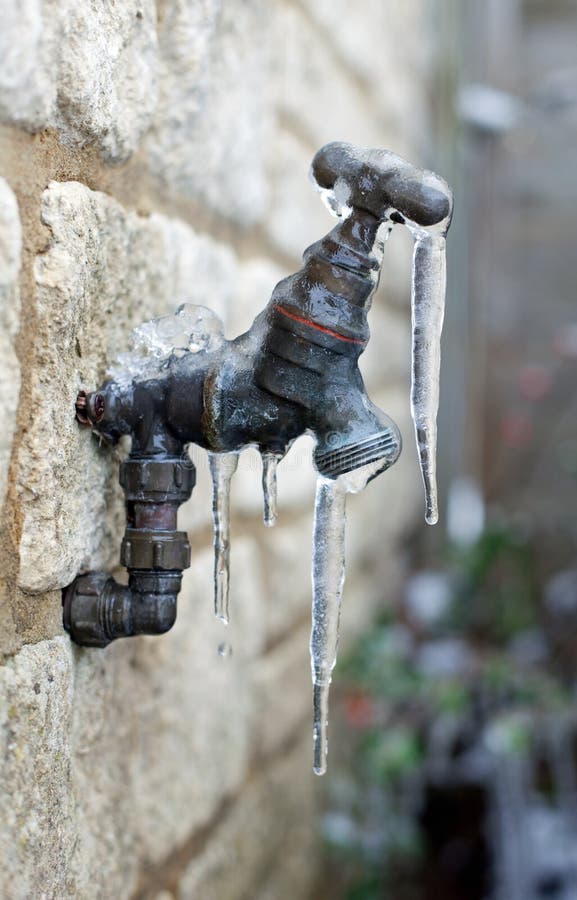Preventing Frozen Pipes in Cold Weather: Essential Strategies
Preventing Frozen Pipes in Cold Weather: Essential Strategies
Blog Article
We've found this great article about Prevent Frozen Pipes below on the web and accepted it made sense to talk about it with you on this site.

Winter can damage your pipes, especially by freezing pipes. Here's exactly how to stop it from taking place and what to do if it does.
Introduction
As temperature levels decline, the danger of icy pipes rises, possibly resulting in costly repair services and water damages. Understanding how to stop icy pipelines is vital for house owners in chilly climates.
Avoidance Tips
Protecting susceptible pipes
Cover pipes in insulation sleeves or use warm tape to safeguard them from freezing temperature levels. Focus on pipelines in unheated or outside locations of the home.
Home heating strategies
Keep indoor spaces appropriately heated up, especially locations with pipes. Open closet doors to allow cozy air to distribute around pipelines under sinks.
How to determine frozen pipelines
Look for decreased water circulation from faucets, unusual smells or sounds from pipelines, and visible frost on revealed pipelines.
Long-Term Solutions
Structural adjustments
Think about rerouting pipes far from outside walls or unheated areas. Add added insulation to attic rooms, basements, and crawl spaces.
Upgrading insulation
Purchase top quality insulation for pipes, attics, and walls. Appropriate insulation aids preserve constant temperatures and minimizes the danger of frozen pipes.
Safeguarding Outdoor Plumbing
Yard tubes and exterior faucets
Detach and drain yard pipes before winter. Mount frost-proof spigots or cover exterior faucets with insulated caps.
Understanding Frozen Pipelines
What causes pipelines to freeze?
Pipelines ice up when subjected to temperatures below 32 ° F (0 ° C) for prolonged durations. As water inside the pipes ices up, it expands, taxing the pipe wall surfaces and possibly triggering them to burst.
Risks and damages
Icy pipes can cause water supply disturbances, building damages, and expensive repairs. Burst pipelines can flood homes and trigger comprehensive architectural damage.
Indicators of Frozen Water Lines
Determining frozen pipelines early can avoid them from bursting.
What to Do If Your Pipes Freeze
Immediate activities to take
If you think icy pipes, maintain faucets open to alleviate stress as the ice melts. Use a hairdryer or towels taken in hot water to thaw pipelines slowly.
Verdict
Protecting against icy pipes needs proactive measures and quick feedbacks. By recognizing the causes, indicators, and safety nets, home owners can safeguard their pipes during cold weather.
5 Ways to Prevent Frozen Pipes
Drain Outdoor Faucets and Disconnect Hoses
First, close the shut-off valve that controls the flow of water in the pipe to your outdoor faucet. Then, head outside to disconnect and drain your hose and open the outdoor faucet to allow the water to completely drain out of the line. Turn off the faucet when done. Finally, head back to the shut-off valve and drain the remaining water inside the pipe into a bucket or container. Additionally, if you have a home irrigation system, you should consider hiring an expert to clear the system of water each year.
Insulate Pipes
One of the best and most cost-effective methods for preventing frozen water pipes is to wrap your pipes with insulation. This is especially important for areas in your home that aren’t exposed to heat, such as an attic. We suggest using foam sleeves, which can typically be found at your local hardware store.
Keep Heat Running at 65
Your pipes are located inside your walls, and the temperature there is much colder than the rest of the house. To prevent your pipes from freezing, The Insurance Information Institute suggests that you keep your home heated to at least 65 degrees, even when traveling. You may want to invest in smart devices that can keep an eye on the temperature in your home while you’re away.
Leave Water Dripping
Moving water — even a small trickle — can prevent ice from forming inside your pipes. When freezing temps are imminent, start a drip of water from all faucets that serve exposed pipes. Leaving a few faucets running will also help relieve pressure inside the pipes and help prevent a rupture if the water inside freezes.
Open Cupboard Doors
Warm your kitchen and bathroom pipes by opening cupboards and vanities. You should also leave your interior doors ajar to help warm air circulate evenly throughout your home.

As an enthusiastic reader about 6 Ways to Prevent Frozen Pipes, I figured sharing that portion was really useful. Sharing is caring. Helping people is fun. Thank-you for going through it.
Book Report this page